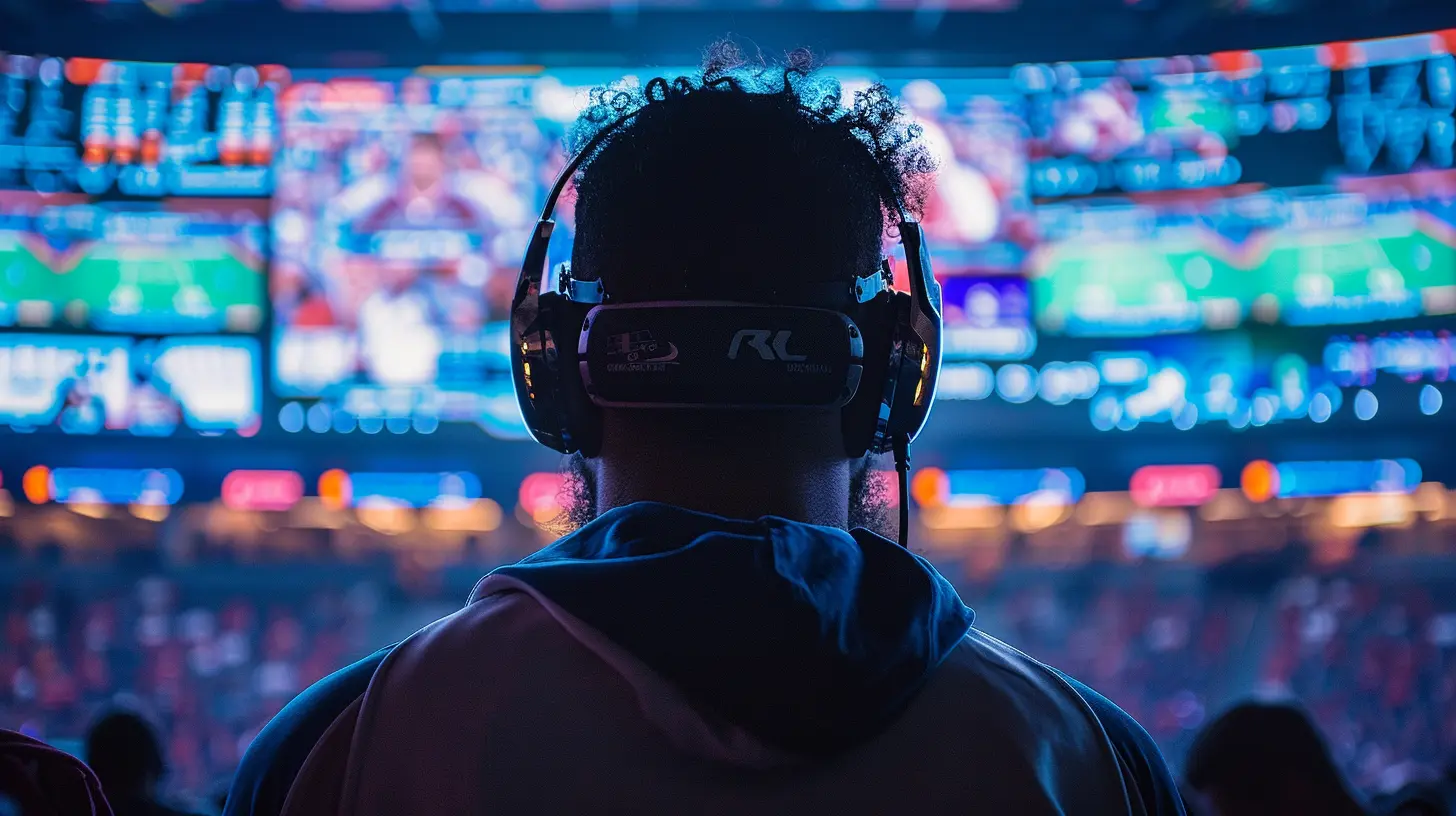How Sports Broadcasters Adapt to Last-Minute Changes
14 August 2025
Sports broadcasting is a beautiful chaos. One moment, everything’s going according to the perfect plan laid out in production meetings, and the next — boom — a player’s injured during warm-up, the weather has other plans, or an unexpected power outage turns things upside down. If you think it's all smooth sailing behind the scenes, think again. So, how do sports broadcasters adapt to last-minute changes without skipping a beat?
Let’s dive behind the microphones and beneath the lights to pull back the curtain on what really goes down.
It’s All About Preparation… Even for the Unpredictable
Let’s get one thing clear — preparation is everything. But more importantly, broadcasters prepare to be unprepared.You see, in sports broadcasting, the only certainty is uncertainty. That’s why broadcasters build out multiple scripts, have a library of background stories, player bios, team stats, and past game footage ready to roll at a moment's notice. They don’t just prepare for what’s expected — they prep for what might happen.
Imagine being on live TV and learning mid-broadcast that a key athlete isn’t playing. You don’t panic. Instead, you pivot and say, “Here’s everything you need to know about his backup.” Boom. You just saved the show.
Quick-Switch Mindsets: Stay Calm and Keep Talking
You ever try to steer a car at 60 mph while changing the GPS? That’s kind of what broadcasters do when something last-minute hits. Their ability to adapt comes down to mental agility.Broadcasters — especially play-by-play announcers and color commentators — are trained to go with the flow. They internalize tons of information so they can freestyle intelligently. No script? No problem. They’re ready to turn a curveball into a home run narrative.
And if you’re wondering, "Do they ever freak out?" Oh yeah — in private. But on-air? It’s all about keeping the energy steady and the show rolling.
The Role of Communication and Teamwork Under Pressure
When chaos hits, it's not just one person scrambling — it's the entire production crew. The communication has to be sharp, fast, and super clear.Producers in the control room are the unsung heroes here. They’re feeding new instructions into the broadcasters’ earpieces, updating graphics on the fly, switching camera angles, and adjusting the broadcast schedule in real time.
Think of it like a pit-stop crew during a Formula 1 race. Everyone has a role, every second counts, and it has to be flawless.
Backup Plans Aren’t Optional — They’re Lifelines
You know how your phone has a power bank just in case? Sports broadcasters do the same — but on a way bigger scale.Let’s say a game gets delayed due to weather. What now? Networks don’t just go to commercial for 40 minutes. Instead, they might:
- Air pre-recorded interviews or features
- Shift coverage to another live event
- Bring in studio analysts for extended commentary
- Replay iconic moments from past games
It’s all about keeping the viewer engaged and the airtime productive.
Remember, dead air is the enemy in broadcasting. Having backups — and backups for your backups — is non-negotiable.
Leveraging Technology for Real-Time Adjustments
Modern broadcasting is part performance, part tech wizardry. And when the clock’s ticking and things are changing fast, technology steps up big time.Some of the tech tools that help broadcasters adapt include:
- Real-time stat and injury trackers: These give up-to-the-minute updates so that commentary stays accurate.
- Live editing software: For making on-the-fly changes to video packages and highlight reels.
- Virtual graphics systems: To update information, scores, and visuals instantly on screen.
Plus, studios now use cloud-based production platforms, which makes it easier to pivot fast — even if the production crew is spread across different locations.
On-Camera Talent: The Art of Thinking on Your Feet
Here’s where the magic really happens. On-camera talent — your commentators, sideline reporters, and analysts — are the faces that steer the ship during chaos.Sideline reporter hears about a controversial call? They’re instantly chasing down quotes. Lead commentator senses the energy shifting? Time for a story or stat to fill the moment. Studio host gets handed breaking news in the middle of a segment? Keep cool, deliver it with clarity.
Their ability to stay composed, think quickly, and deliver meaningful content during unexpected moments is pure skill — and yeah, a little bit of adrenaline.
Embracing the Drama: Turning Chaos into Content
Here’s a little secret: last-minute changes can actually enhance a broadcast.Think about it. When something crazy happens — say, a sudden injury, weather delay, or unexpected player debut — it’s entertaining. Viewers are glued to the screen, waiting to see how the story unfolds.
And smart broadcasters lean into that. They shift their tone, elevate the suspense, and invite the audience into the moment.
It’s like live theater. No retakes. No script re-dos. Just pure, in-the-moment drama — and that’s where the broadcast can truly shine.
How Analysts Rework Narratives in Real Time
Let’s not forget the analysts — the former athletes, coaches, and experts breaking down the Xs and Os.Their job gets way harder when plans change. Why? Because they’ve spent hours prepping for specific matchups, stats, and strategies.
But when a key player is scratched at the last second? Time to ditch that plan and analyze how this new reality affects the game.
- How does this change team dynamics?
- Who steps up and fills the gap?
- What does past data say about this matchup now?
Analysts dive deep into the archives quickly, and reshape the story mid-air. It’s like changing the plot of a movie while the audience is watching it — and still making it make sense.
Social Media: The New Wildcard in Broadcasting
Let’s talk about the elephant in the room — social media.When something unexpected happens during a broadcast, fans immediately take to Twitter, Instagram, Reddit — you name it. And guess what? Broadcasters are watching too.
Social feeds become real-time gold mines for reactions, alternative angles, breaking updates, and fan opinion. Some networks even incorporate social media into their broadcast for a more interactive experience.
And in some cases, fans catch things before production crews do (yep, it happens). So, staying plugged in is a must.
Crisis Mode: When Things Go Really, Really Wrong
Okay, we’ve talked weather delays, player swaps, and broadcast hiccups. But what about full-blown disasters?Imagine the power cutting out mid-game. Or a camera going down. Or an emergency situation in the stadium.
Broadcasters have crisis protocols for these kinds of scenarios. They include:
- Immediately shifting to a backup feed or studio
- Keeping viewers informed with verified details only
- Maintaining calm and professionalism no matter what
One of the golden rules? Don’t speculate. No one wants to walk back something inaccurate later. So, broadcasters focus on facts, clarity, and keeping control of the narrative.
The Producer’s Role: Orchestrating Calm in the Chaos
Finally, let’s give a standing ovation to the producers — the ultimate ringmasters in this circus.These folks juggle everything from timing and graphics to making tough editorial calls on the fly. When a surprise hits, they’re the ones rerouting plans and keeping the entire team aligned.
With a headset on and about 12 screens in front of them, producers make real-time decisions that affect millions of eyeballs. Their catchphrase? “Okay, Plan B — go!”
Final Thoughts: Adaptability is the Broadcaster’s Superpower
No matter the sport, no matter the platform — live broadcasts are unpredictable. But that’s also what makes them so special.Sports broadcasters are like improvisational artists mixed with journalists, tech operators, and adrenaline junkies. They thrive on pressure because the show must go on.
And the best part? You, the viewer, hardly ever notice the chaos happening behind the camera — because these pros make it look effortless.
all images in this post were generated using AI tools
Category:
Sports BroadcastingAuthor:

Frankie Bailey
Discussion
rate this article
1 comments
Cora McCaffrey
Great insights on broadcasters' quick thinking! Their adaptability truly enhances the viewing experience during unexpected moments.
September 6, 2025 at 2:24 AM

Frankie Bailey
Thank you! I'm glad you found the insights valuable. Adaptability is indeed key in enhancing the viewing experience!


